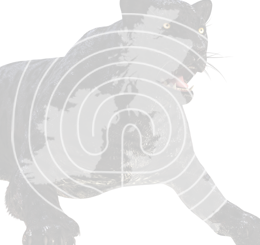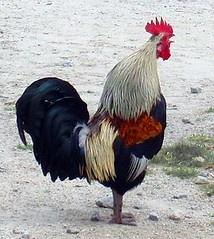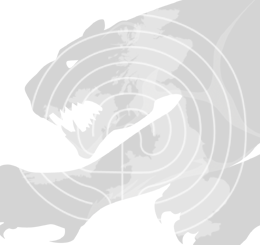The Double-headed Snake of Newbury
The following poem was wrote by John Greenleaf Whittier (1807 – 1892)
Far away in the twilight time
Of every people, in every clime,
Dragons and griffins and monsters dire,
Born of water, and air, and fire,
Or nursed, like the Python, in the mud
And ooze of the old Deucalion flood,
Crawl and wriggle and foam with rage,
Through dusk tradition and ballad age.
So from the childhood of Newbury town
And its time of fable the tale comes down
Of a terror which haunted bush and brake,
The Amphisbaena, the Double Snake!
 Thou who makest the tale thy mirth,
Thou who makest the tale thy mirth,
Consider that strip of Christian earth
On the desolate shore of a sailless sea,
Full of terror and mystery,
Half-redeemed from the evil hold
Of the wood so dreary, and dark, and old,
Which drank with its lips of leaves the dew
When Time was young, and the world was new,
And wove its shadows with sun and moon,
Ere the stones of Cheops were squared and hewn.
Think of the sea’s dread monotone,
Of the mournful wail from the pine-wood blown,
Of the strange, vast splendors that lit the North,
Of the troubled throes of the quaking earth,
And the dismal tales the Indian told,
Till the settler’s heart at his hearth grew cold,
And he shrank from the tawny wizard’s boasts,
And the hovering shadows seemed full of ghosts,
And above, below, and on every side,
The fear of his creed seemed verified;–
And think, if his lot were now thine own,
To grope with terrors nor named nor known,
How laxer muscle and weaker nerve
And a feebler faith thy need might serve;
And own to thyself the wonder more
That the snake had two heads, and not a score!
Whether he lurked in the Oldtown fen
Or the gray earth-flax of the Devil’s Den,
Or swam in the wooded Artichoke,
Or coiled by the Northman’s Written Rock,
Nothing on record is left to show;
Only the fact that he lived, we know,
And left the cast of a double head
in the scaly mask which he yearly shed.
For he earned a head where his tail should be,
And the two, of course, could never agree,
But wriggled about with main and might,
Now to the left and now to the right;
Pulling and twisting this way and that,
Neither knew what the other was at.
A snake with two heads, lurking so near!–
Judge of the wonder, guess at the fear!
Think what ancient gossips might say,
Shaking their heads in their dreary way,
Between the meetings on Sabbath-day!
How urchins, searching at day’s decline
The Common Pasture for sheep or kine,
The terrible double-ganger heard
In the leafy rustle or whir of bird!
Think what a zest it gave to the sport,
In berry-time, of the younger sort,
As over pastures blackberry-twined,
Reuben and Dorothy lagged behind,
And closer and closer, for fear of harm,
The maiden clung to her lover’s arm;
And how the spark, who was forced to stay,
By his sweetheart’s fears, till the break of day,
Thanked the snake for the fond delay!
Far and wide the tale was told,
Like a snowball growing while it rolled.
The nurse hushed with it the baby’s cry;
And it served, in the worthy minister’s eye,
To paint the primitive serpent by.
Cotton Mather came galloping down
All the way to Newbury town,
With his eyes agog and his ears set wide,
And his marvellous inkhorn at his side;
Stirring the while in the shallow pool
Of his brains for the lore he learned at school,
To garnish the story, with here a streak
Of Latin, and there another of Greek:
And the tales he heard and the notes he took,
Behold! are they not in his Wonder-Book?
Stories, like dragons, are hard to kill.
If the snake does not, the tale runs still
In Byfield Meadows, on Pipestave Hill.
And still, whenever husband and wife
Publish the shame of their daily strife,
And, with mid cross-purpose, tug and strain
At either end of the marriage-chain,
The gossips say, with a knowing shake
Of their gray heads, “Look at the Double Snake!
One in body and two in will,
The Amphisbaena is living still!”
This poem was written by John Greenleaf Whittier and concerns a two headed snake in Newbury Massachussetts. Cotton Mather was a theologian with an interest in the supernatural. Upon hearing of the two headed snake in Newbury he contacted Rev Christopher Toppan who replied, “Concerning the amphisbena, as soon as I received your commands I made diligent enquiry of several persons who saw it after it was dead, but they could give me no assurance of its having two heads.”
Later, after finding someone who did see it, he adds to his letter:
“This person is so credible that I can as much believe him as if I had seen it myself. He tells me of another man that examined it as he did, but I cannot meet him.”
Rev Christopher Toppan (1671-1747) and I share a common ancestor and would be 4th cousins (9 times removed).




Recent Comments